Nút Chất Liệu Nhiễu

Nút Chất Liệu Nhiễu.
The Noise Texture node evaluates a fractal Perlin noise at the input texture coordinates.
Đầu Vào
The inputs are dynamic, they become available if needed depending on the node properties.
- Véctơ
Tọa độ Chất Liệu để lấy mẫu vật Chất Liệu tại đó; Trong trường hợp ổ cắm không có kết nối nào thì sử dụng tọa độ của Chất Liệu Sinh Tạo (Generated).
- W
Tọa độ Chất Liệu dùng để ước tính nhiễu.
- Tỷ Lệ
Tỷ lệ của cơ sở nhiễu quãng tám (noise octave).
- Chi Tiết
Số nhiễu quãng tám. Phần phân số của đầu vào được nhân với độ lớn của quãng tám cao nhất. Số quãng tám càng cao thì thời gian kết xuất cũng càng lâu hơn.
- Độ Ráp/Độ Nhám/Ráp/Rối
Blend between a smoother noise pattern, and rougher with sharper peaks.
- Sự Bóp Méo
Lượng biến dạng.
Tính Chất
- Kích Thước
Kích thước của không gian để ước tính nhiễu bên trong đó.
- 1D
Evaluate the noise in 1D space at the input W.
- 2 Chiều -- 2D
Tính toán nhiễu trong không gian 2D tại Véctơ đầu vào. Thành phần Z sẽ bị bỏ qua.
- 3D
Evaluate the noise in 3D space at the input Vector.
- 4D
Tính toán nhiễu trong không gian 4D tại Véctơ đầu vào và đầu vào W làm chiều thứ tư.
Ghi chú
Số chiều cao hơn tương đương với thời gian kết xuất lâu hơn, do đó, chúng ta nên sử dụng số chiều thấp hơn, trừ phi thực sự cần thiết số chiều cao hơn.
Đầu Ra
- Hệ Số
Value of fractal noise.
- Màu Sắc
Color with different fractal noise in each component.
Ví Dụ
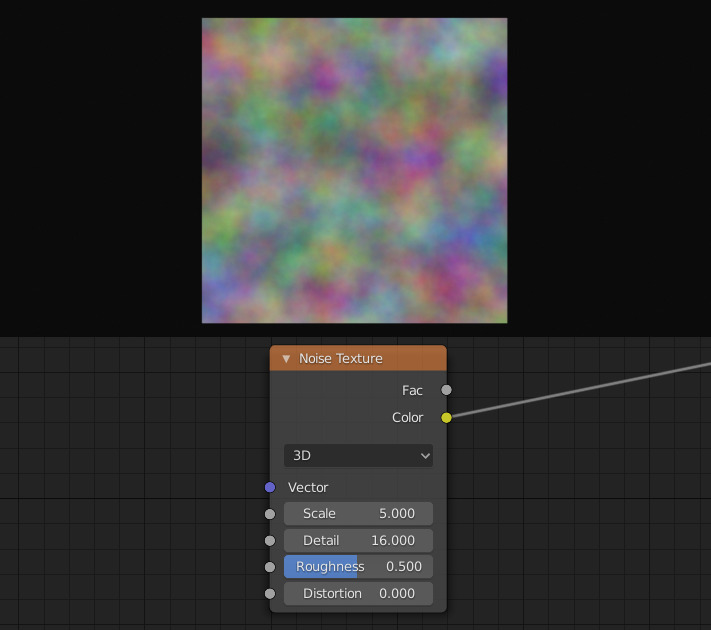
Noise Texture with high detail.
Một số Lưu Ý/Ghi Chú
While the noise is random in nature, it follows a certain pattern that might not evaluate to random values in some configurations. For instance, consider the following configuration where a grid of objects have a material that evaluates a noise texture at their locations. One might expect the objects to have random values since they have different locations, but this is not the case.
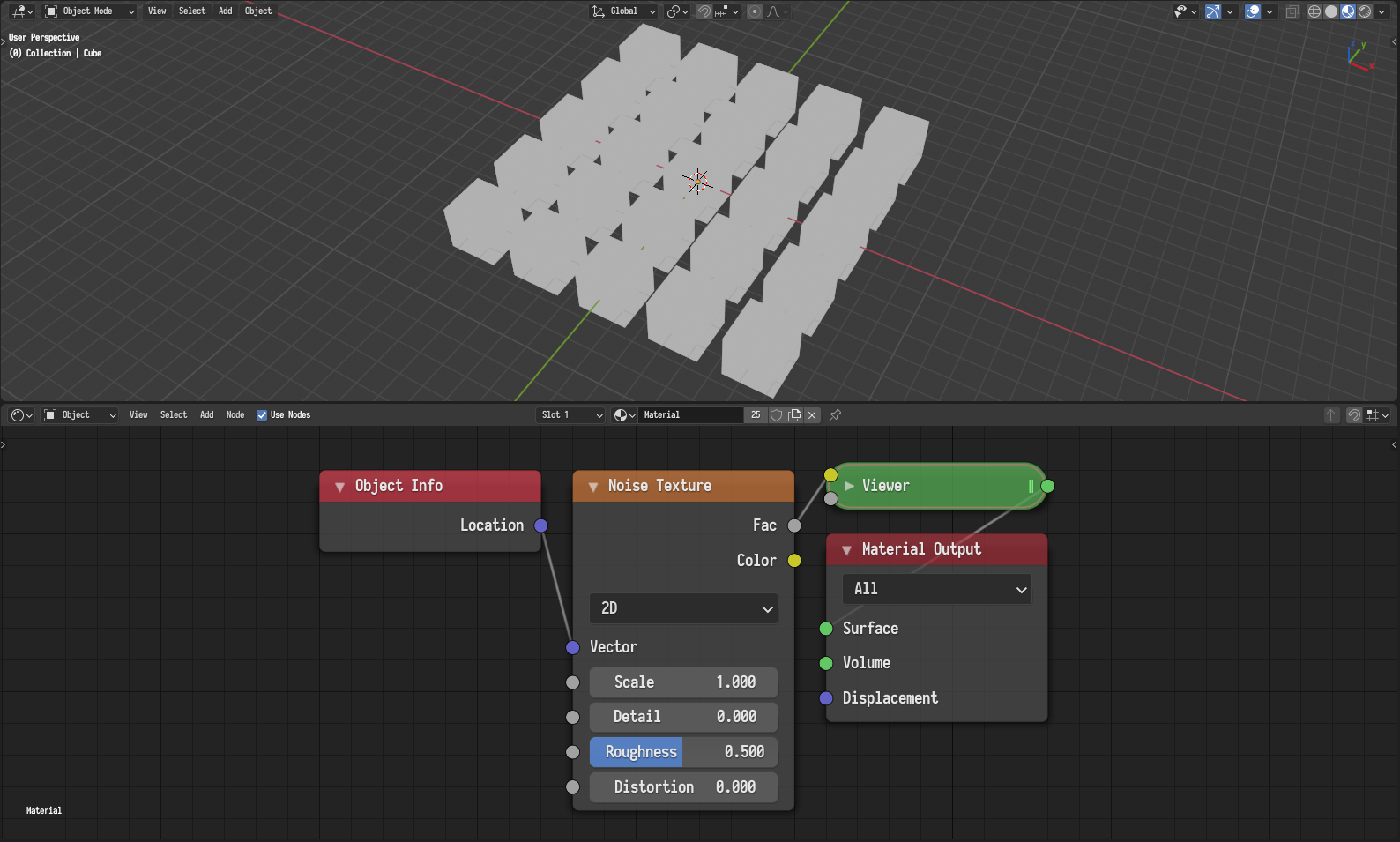
An example configuration where the noise evaluates to a constant value.
It seems all objects have a value of 0.5. To understand why this happens, let us look at the following plot of a 1D noise texture.

A plot of a 1D noise with zero details and zero distortion.
The horizontal line denotes a value of 0.5 and the vertical lines denotes whole numbers assuming a noise scale of 1. As can be seen, the noise always intersects the 0.5 line at whole numbers. Since the aforementioned objects were distributed on a grid and have whole number locations, they all evaluate to 0.5. Which explains the issue at hand.
Generally, any discrete evaluation of noise at integer multiples of the reciprocal of the noise scale will always evaluate to 0.5. It also follows that evaluations closer to that will have values close to 0.5. In such cases, it is almost always preferred to use the White Noise Texture.
Regardless, one can mitigate this issue in a number of ways:
Adjust the scale of the noise to avoid aligning the noise with the evaluation domain.
Add an arbitrary offset to the texture coordinates to break the alignment with the evaluation domain.
Evaluate the noise at a higher dimension and adjust the extra dimension until a satisfactory result is achieved.

Hằng Số. |
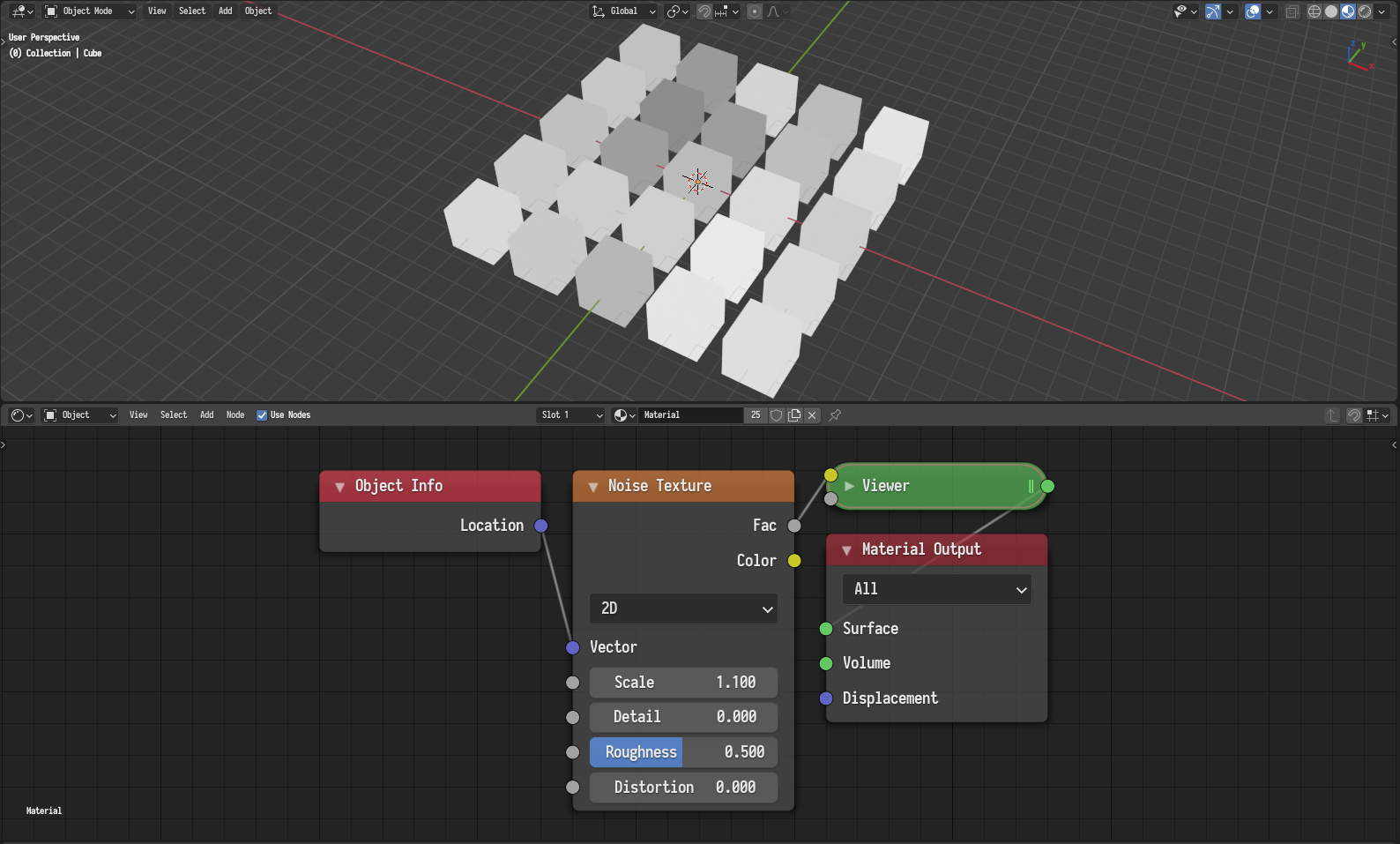
Mitigating the issue by adjusting the scale. |

Mitigating the issue by adding an arbitrary offset. |
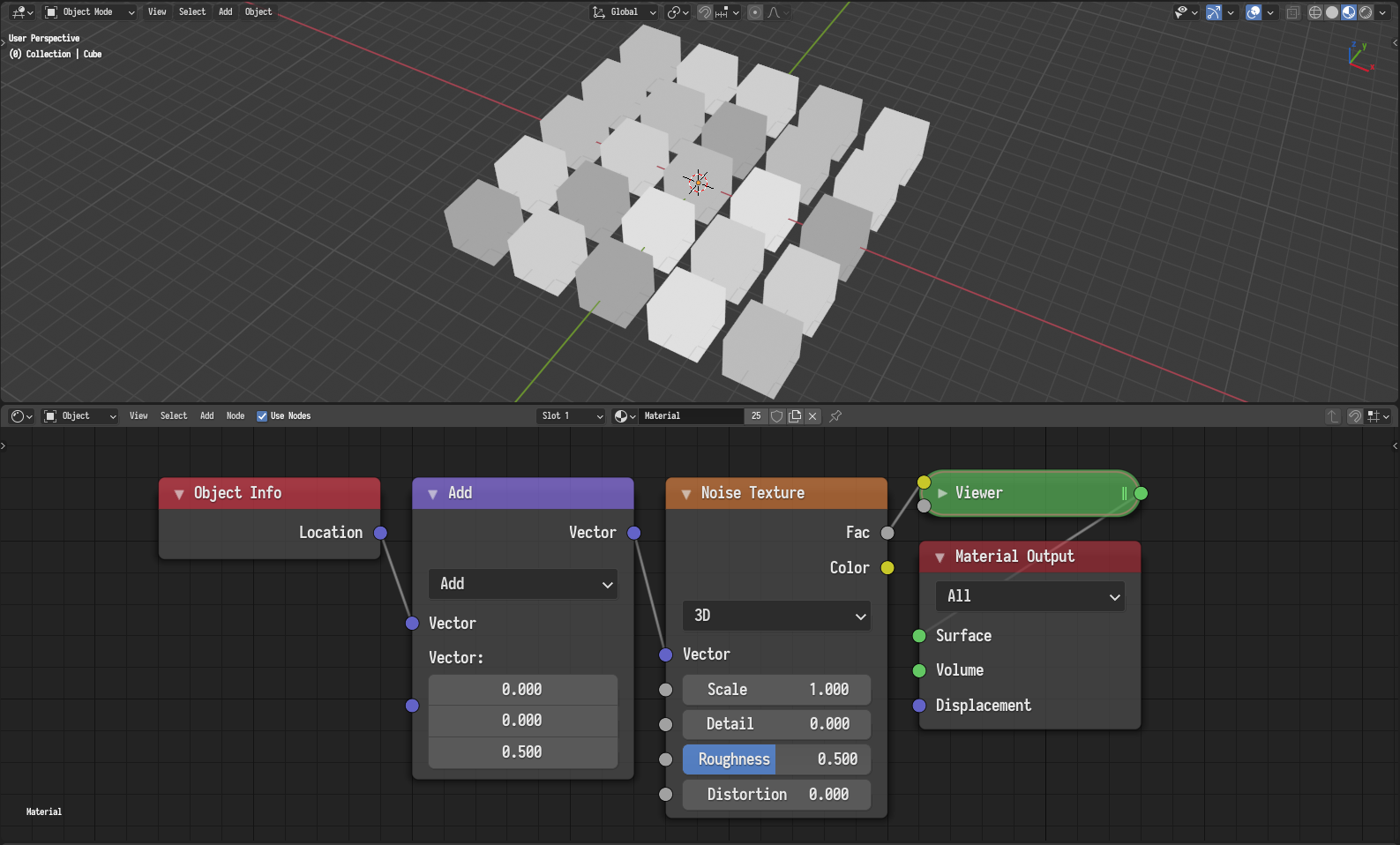
Mitigating the issue by evaluating at a higher dimension. |
Similarly, in other configurations, one might experience some banding patterns in the noise, where there are bands of high contrast areas followed by banding of low contrast areas. For instance, planar surfaces that are slightly tilted along one of the axis will have such a banding pattern.

An example configuration where the noise have a banding pattern.
This happens because the slight tilt along one of the axis causes values along the perpendicular axis to change very slowly making the grid structure of the noise more apparent. The easiest way to mitigate this issue to rotate the coordinates by an arbitrary amount.
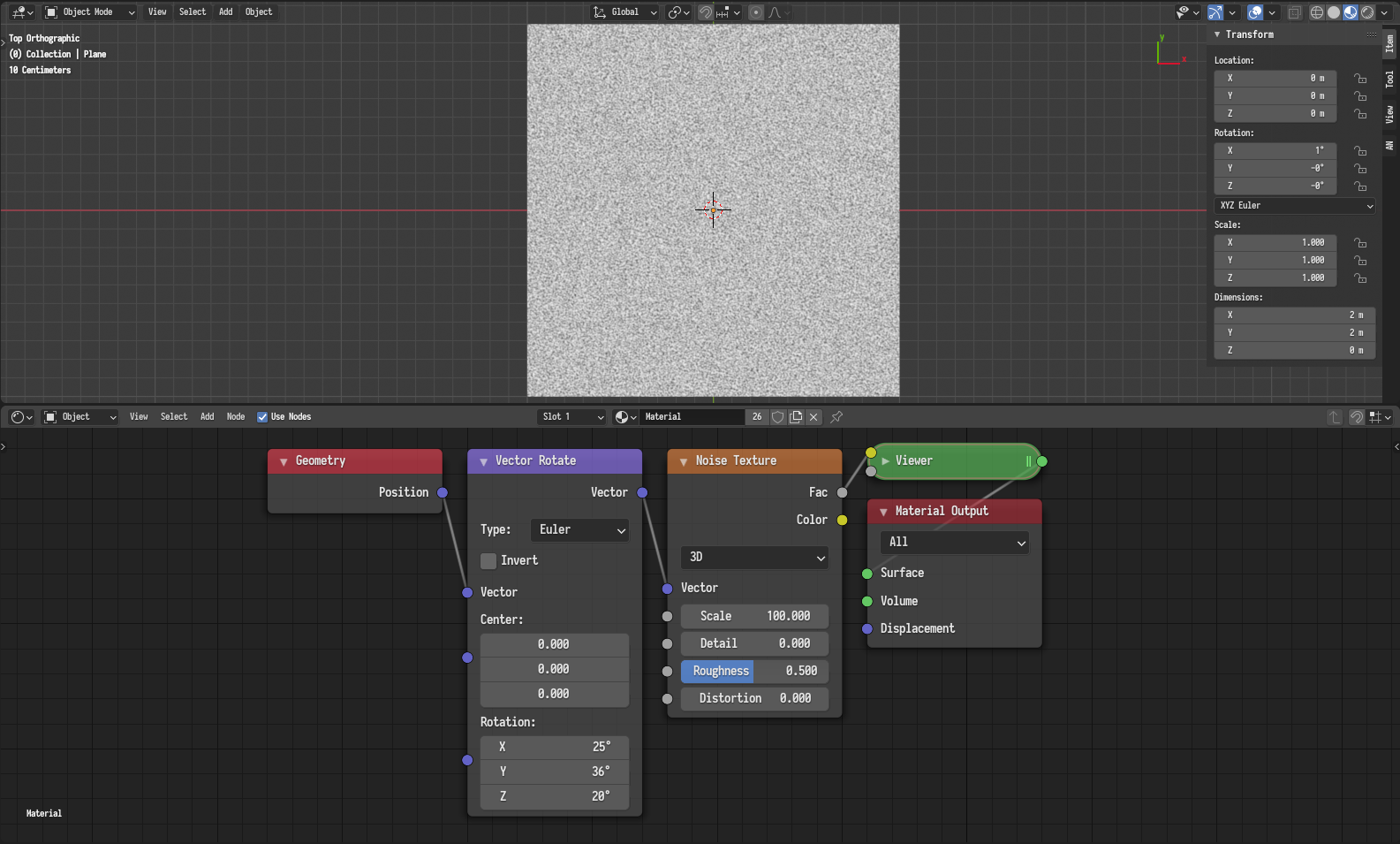
Mitigating the issue by rotating the coordinates by an arbitrary amount.